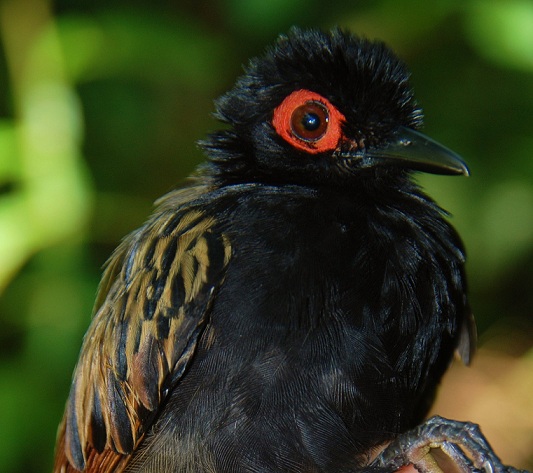The relative importance of species interactions and physiology
Home Stations Assistants Videos Publications
|
Slopes of San Pedro in the Kosnipata Valley, where we have completed hundreds of surveys to understand how bird communities change with elevation. |
Ecologists
have long been challenged to understand the
ecological factors that maintain species range limits. Montane
regions allow us to study
range limits for many species simultaneously because habitats and
species
composition change abruptly along elevational gradients. Tropical
mountain ranges, because of their
high species diversity and density of range limits at small spatial
scales,
have enormous, mostly untapped potential as study systems for
understanding
species distributions and the ecological factors that maintain them. |
| Our research project utilizes a large-scale elevational gradient in the Peruvian Andes to test alternative ecological mechanisms that could determine range limits of montane birds. We begin with estimating the fundamental or physiological niche of species along the gradient based on key thermoregulatory parameters, including tolerance of thermal conditions and associated costs of thermoregulation. This describes a species’ idealized distribution if it were limited only by the range of physical conditions it could tolerate. Using these distributions as a baseline, we then use surveys to determine whether species show different realized distributions along the gradient. Using a combination of field experiments and intensive data collection on life-history and behavioral traits, we target specific biotic constraints that could be acting on species range limits, including interspecific competition, mutualistic interactions, and nest predation. |
 The
Black-spotted Bare-eye (Phlegopsis
nigromaculata) is
one of hundreds of species of antbirds in the Amazon that do not reach Andean cloud forest at 1500 m. Are these species physiologically constrained to hot and humid low-elevation climates? Basic physiological traits of most tropical bird species are still unknown. |
 At each of three stations, we have set up a metabolic physiology lab to measure physiological traits of captured birds. These data allow us to estimate physiological niches of species along the mountainside. |
This
study builds on an extensive addition to an
existing database of the distributions of birds of Manu National Park,
where one can find >1000 bird species along a single
gradient from 400-3400m -- more species than all of North America.
We are examining a number of questions with this research: (1)
What are the thermal tolerances and
thermoregulatory costs of tropical montane birds, how do they
vary with elevation, and do species' distributions
reflect physiological constraints imposed by thermal environments
and hypoxia? (2) Does interspecific aggression underlie "species
replacements" along
elevational gradients, constraining the realized distributions of
closely
related species? (3) Does nest predation in tropical montane
regions reinforce elevational limits of birds? (4) Do
mutualistic interactions among species generate discrete
communities, where range limits of species providing mutual
benefits coincide
along gradients? |
Back to top